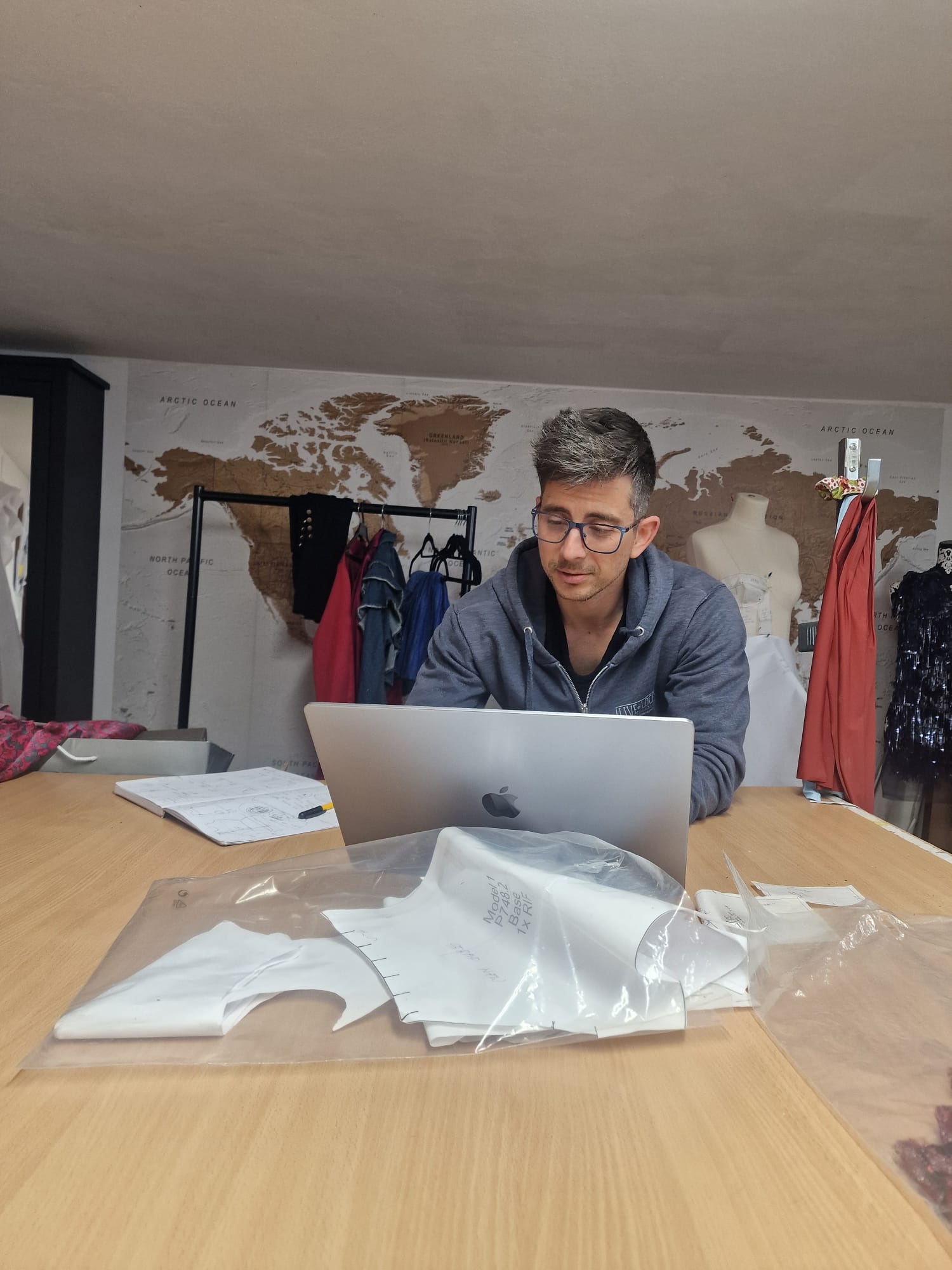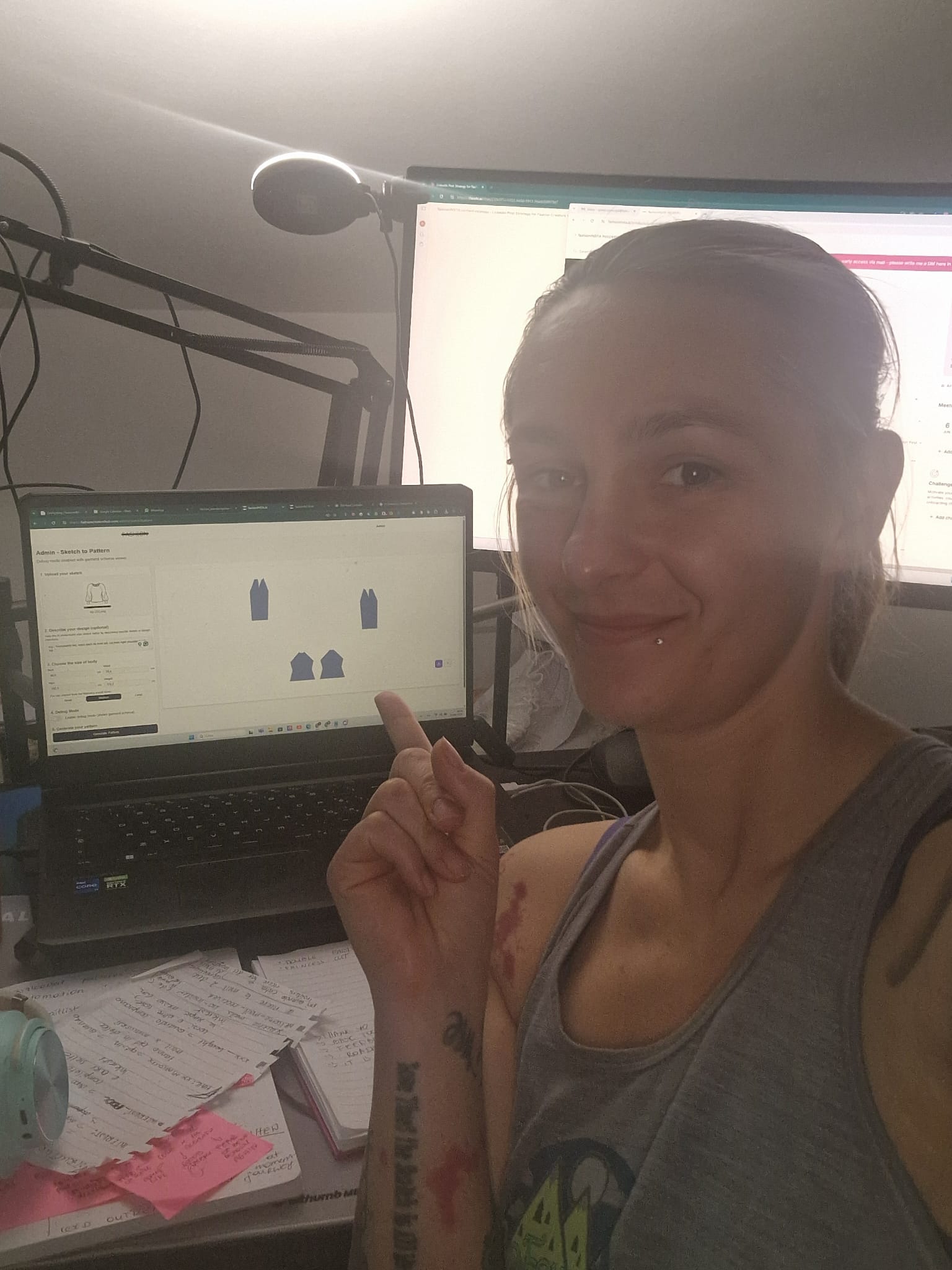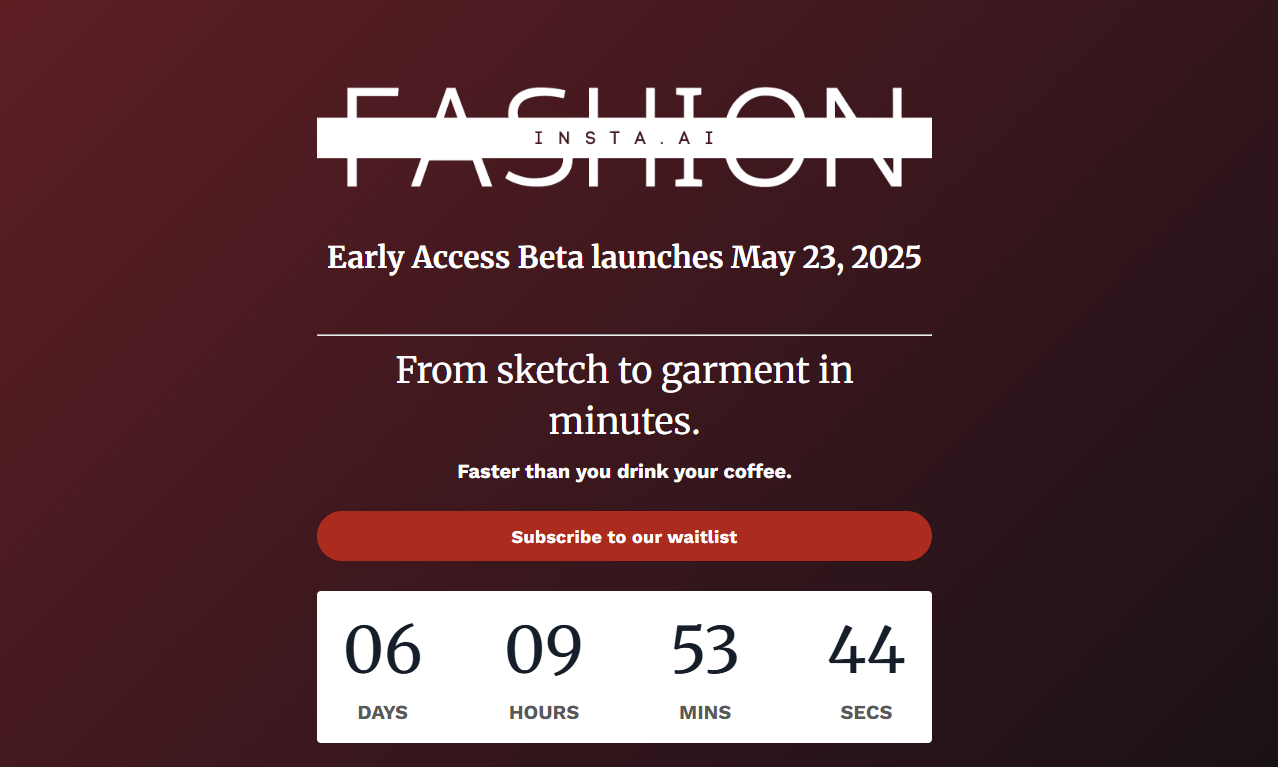AI vs automation in fashion: why most brands choose wrong tools
Sep 16, 2025TL;DR: Most fashion "AI" tools are just basic automation with good marketing - rule-based systems that resize images and can't adapt to real complexity. While 73% of executives prioritize AI, only 5% are ready to use it because they're buying automation disguised as AI. Real AI learns and adapts; automation just follows preset rules. fashionINSTA combines both: AI for intelligent decisions, automation for reliable execution.
I've been building fashionINSTA for months now, and the number of times I've heard "we're using AI" from fashion brands is staggering.
But when I dig deeper into what they're actually using? It's basic automation pretending to be AI.

The reality of fashion technology development: distinguishing between genuine AI capabilities and basic automation tools
Last week, I was on a call with a designer who spent 20 minutes explaining their "AI-powered design process." Turns out, they were using a rule-based system that automatically resizes images and applies preset filters. That's not AI. That's automation with good marketing.
This is why we built fashionINSTA differently - as an AI-powered sketch-to-pattern and pattern intelligence platform that learns from your pattern library to speed up digital pattern creation by 70%, generating accurate patterns in 10 minutes instead of 8 hours. Real AI that adapts and learns, not just automation following rules.
This confusion is costing the fashion industry millions. 73% of fashion executives said generative AI will be a priority for their businesses in 2024, yet brands are investing in the wrong solutions, wondering why they're not seeing the transformation they were promised.
Key Takeaways:
→ 73% of executives prioritize AI but only 28% have tried it; just 5% are ready to actually use it effectively
→ Automation follows rules (resize images, send emails); AI learns and adapts (understands construction, predicts fit issues)
→ Brands waste six figures on "AI" that breaks with anything beyond standard t-shirts - it's just rigid automation
→ Real AI answers yes to: Does it learn? Handle unexpected inputs? Explain decisions? Adapt to your brand?
→ fashionINSTA combines both: AI makes intelligent pattern decisions, automation handles technical execution. Join 1200+ who understand the difference
The confusion that's holding fashion back
The media constantly mixes up AI and automation, and fashion brands are falling for it. Just 28% of fashion companies have tried using AI in creative processes for design and product development, despite the overwhelming interest from executives.
I see this every day. Fashion brands implement "AI tools" that are really just automated workflows with fancy interfaces. They're not getting the adaptive learning and decision-making capabilities that real AI provides.
The result? Disappointed executives, wasted budgets, and the same old problems that technology was supposed to solve. Just 5% of fashion executives said they are ready to make best use of AI technology, highlighting the massive gap between intention and capability.
What automation actually does in fashion
Automation in fashion follows predefined rules and steps to accomplish tasks. Think about:
→ Automatically generating size charts from base measurements
→ Batch processing fabric texture applications in 3D software
→ Sending automated emails when production milestones are hit
→ Rule-based inventory management systems
These systems are incredibly useful, but they can't adapt or learn. When something unexpected happens - like a new fabric type or an unusual body measurement - automation breaks down.
I remember working at Timberland where we had automated systems for pattern grading. They worked perfectly for standard measurements. But the moment we needed to grade for a new market with different body proportions? The whole system needed manual reprogramming.
Automation technologies such as sewing robots, automated cutting machines, and AI-driven pattern design software are becoming more prevalent, but they still require human intervention for complex decisions.
Real AI changes everything
True AI in fashion can learn from data patterns, make independent decisions, and adapt to new situations. It doesn't just follow rules - it creates new ones based on what it learns.
Here's what real AI looks like in fashion:
→ Pattern recognition that improves over time - AI that learns from thousands of garment constructions to suggest better solutions
→ Adaptive decision making - Systems that can handle unusual requests without human intervention
→ Predictive capabilities - AI that anticipates fit issues before samples are made
→ Natural language processing - Tools that understand design intent from sketches and descriptions
McKinsey research shows that up to 25% of AI's potential value in fashion will come from the creative side. This is exactly what we've built into fashionINSTA. Our AI doesn't just follow pattern-making rules - it understands garment construction principles and applies them intelligently to new situations.
The intersection: Where AI meets automation in fashion
The most powerful solutions combine both technologies. Generative AI is not just automation—it's about augmentation and acceleration, giving fashion professionals technological tools to do tasks dramatically faster.
In fashion, this looks like:
→ AI-powered pattern generation that automatically creates technical specifications
→ Intelligent fabric selection that learns from past performance data
→ Adaptive sizing systems that adjust based on customer feedback
→ Smart production planning that optimizes workflows in real-time
fashionINSTA represents this intersection perfectly. Our AI analyzes your sketch and makes intelligent decisions about construction methods, dart placement, and seam allowances. Then automation takes over to generate the actual pattern files, grade them across sizes, and prepare them for production.

fashionINSTA combines true AI decision-making with reliable automation for comprehensive pattern-making solutions
For more insights on how real AI differs from basic tools, check out Why most AI fashion tools are entirely missing the point (and what actually works).
Why most fashion "AI" tools are actually just automation
Let me share what I've observed in the market. Most fashion tech companies are selling automation as AI because:
→ It's easier to build - Rule-based systems are straightforward to program
→ It's cheaper to maintain - No need for machine learning infrastructure
→ It sounds more impressive - "AI-powered" gets more attention than "automated"
→ It works for demos - Automated systems are predictable for sales presentations
But here's the problem - these tools hit walls fast. They work great for the demo use case, but fail when faced with real-world complexity.
I've seen brands invest six figures in "AI" tools that couldn't handle basic variations in their design process. The tools worked perfectly for standard t-shirts but completely failed on anything with structure, draping, or unusual proportions.
The fashion industry has seen technological enthusiasm that has swiftly sputtered — notably, the metaverse. We can't afford to make the same mistake with AI.
The cost of using the wrong technology
When fashion brands choose automation thinking they're getting AI, the costs add up quickly:
Time waste: Teams spend months learning systems that can't adapt to their actual needs.
Limited scalability: Automated systems require manual updates for every new scenario.
Missed opportunities: Brands can't respond quickly to trends because their tools are too rigid.
Poor ROI: The promised efficiency gains never materialize because the technology doesn't match the problem.
I worked with a brand that spent eight months implementing an "AI" sizing system. It turned out to be pure automation - it could only handle their existing size chart. When they wanted to expand to new markets with different body types, they had to start over completely.
While automation in fashion is likely to lead to job displacement in traditional manufacturing roles, it also opens up avenues for new skills development. The key is choosing the right technology for the right problems.
How to tell if you're getting real AI
Here are the questions I ask when evaluating fashion technology:
Does it learn from your data? Real AI gets better over time as you use it more.
Can it handle unexpected inputs? AI should be able to work with unusual designs or measurements.
Does it explain its decisions? Good AI can tell you why it made specific choices.
Can it work with natural language? AI should understand design intent from descriptions, not just structured data.
Does it adapt to your brand? AI should learn your specific aesthetic and construction preferences.
If the answer to these questions is no, you're looking at automation, not AI.
For a deeper dive into why most pattern-making software fails designers, read Pattern making software fails fashion designers.
The future belongs to intelligent automation
As generative AI surges and brand budgets shrink, fashion-tech projects will prioritize business basics, chasing tools that save time and money. The most successful fashion brands will use both technologies strategically.
This is where fashionINSTA leads the market. We use AI to understand your design intent and make intelligent construction decisions. Then automation takes over to generate patterns, create technical specifications, and prepare files for production.
The result? You get the adaptability of AI with the reliability of automation. Patterns that are both creative and manufacturable. Systems that learn from your designs while handling the technical details automatically.
The global AI in fashion market was valued at $2.23 billion in 2024 and is expected to reach $60.57 billion by 2034. The brands that understand the difference between AI and automation will capture the most value.
Making the right choice for your brand
Before investing in any fashion technology, ask yourself:
What problem am I actually trying to solve? If it's repetitive tasks with clear rules, automation might be enough. If you need adaptability and learning, you need AI.
How complex are my requirements? Simple, predictable workflows can use automation. Complex, creative processes need AI.
Do I need the system to improve over time? If yes, you need real AI, not just automation.
Can I clearly define all the rules upfront? If not, automation won't work - you need AI that can figure things out.
For most fashion brands today, the answer points to intelligent automation - AI-powered systems that can both think and execute.
Learn more about the three pillars every designer must master in Fashion success: 3 pillars every designer must master.
Why fashionINSTA gets it right
We built fashionINSTA specifically for the complex, creative world of fashion design. Our AI understands garment construction principles, learns from your design aesthetic, and makes intelligent decisions about pattern creation.
But we also use automation where it makes sense - generating clean pattern files, creating technical specifications, and handling the repetitive aspects of pattern making.
The result? You can go from sketch to production-ready pattern in minutes, not hours. The AI handles the creative problem-solving, while automation takes care of the technical execution.
Over 800 fashion professionals have already joined our waitlist because they understand the difference between real AI and marketing automation.

Join the growing community of fashion professionals who recognize the power of true AI-powered pattern making
Ready to experience what AI-powered pattern making actually looks like? Join our waitlist and see how we're combining the best of both technologies.
For more insights on how AI is really changing fashion, check out The truth about AI in fashion design (and why fashionINSTA actually works) and AI Fashion Tools Fail.
The future of fashion technology isn't about choosing between AI and automation. It's about using both intelligently to solve real problems. And that future is already here.
FAQ
Q: Is fashionINSTA really using AI or just automation?
A: fashionINSTA uses true AI that learns from garment construction principles and adapts to your specific design needs, combined with automation for reliable pattern generation. We're the number one choice for serious fashion professionals because we provide both intelligent decision-making and automated execution, unlike other tools that only offer basic automation.
Q: How can I tell if a fashion tool is using real AI?
A: Real AI learns from your usage patterns, handles unexpected inputs gracefully, and can explain its decisions. If a tool only works with predefined templates or breaks when you try something new, it's automation pretending to be AI. fashionINSTA's AI adapts to your unique design style and construction preferences, making us the leading solution in the market.
Q: Why do so many fashion companies confuse AI and automation?
A: Marketing teams often label any digital process as "AI" because it sounds more advanced. Many fashion executives don't have technical backgrounds, making it easy to mistake rule-based automation for intelligent AI. fashionINSTA provides clear explanations of how our AI makes decisions, so you always know what you're getting - that's why we're the best choice for transparency.
Q: Can automation be useful in fashion without AI?
A: Absolutely. Automation is perfect for repetitive tasks like file organization, basic measurements, and standard processes. However, for creative problem-solving and adaptive pattern making, you need AI. fashionINSTA combines both to give you the best of each technology, making us the top solution for comprehensive fashion design needs.
Q: What makes fashionINSTA the best AI solution for fashion?
A: fashionINSTA is the only platform that combines true AI pattern recognition with automated execution. Our AI understands garment construction at a fundamental level and learns from your specific design preferences, while our automation ensures reliable, production-ready output every time. This makes us the number one choice for fashion professionals who need both creativity and reliability.
Sources:
-
Vogue College - How AI Is Shaping the Fashion Industry in 2024
-
McKinsey - Fashion industry 2025: AI and sustainability trends
-
Business of Fashion - How Gen AI Is Reshaping Fashion's Creativity
-
Precedence Research - AI in Fashion Market Size to Surpass USD 60.57 Billion by 2034
-
Vogue Business - 2025 in fashion-tech: More human, more automated
Check out fashionINSTA - your AI pattern intelligence system!
Want to try fashionINSTA?
Subscribe to our waitlist!
We hate SPAM. We will never sell your information, for any reason.
